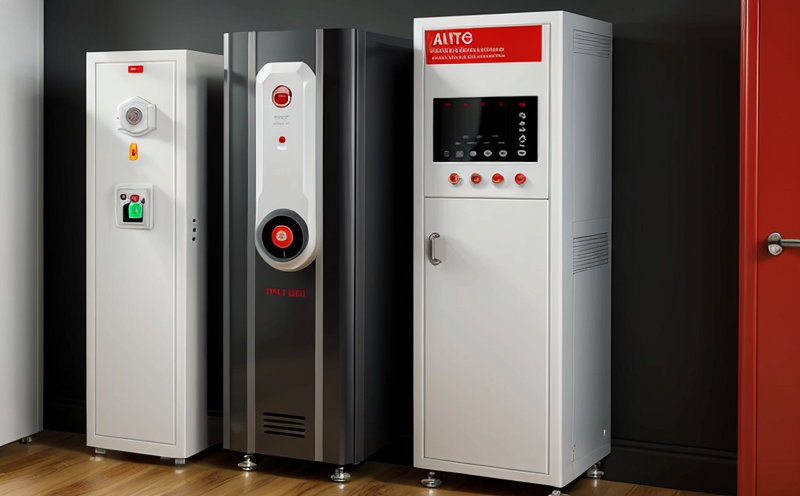Environmental Resistance Testing of Fire Detection Devices
The environmental resistance testing of fire detection devices is a critical aspect of ensuring that these systems perform reliably and effectively under various challenging conditions. This testing ensures that the fire alarms are not only responsive to smoke, heat, or other triggering events but also withstand environmental factors such as humidity, temperature fluctuations, dust, and water ingress.
Fire detection devices are designed to detect early signs of a potential fire and alert personnel before it escalates into a dangerous situation. However, these devices must operate correctly in real-world environments, which often involve exposure to various elements that could affect their performance. Environmental resistance testing helps manufacturers identify potential weaknesses in the design or manufacturing process.
During environmental resistance testing, fire detection devices are subjected to controlled conditions that simulate actual operating environments. This includes temperature cycling tests, humidity and water ingress tests, dust accumulation tests, and vibration stress tests. The primary objective is to ensure that these devices can withstand exposure to these elements without compromising their functionality.
The testing process involves several key steps:
- Temperature Cycling: Devices are exposed to extreme temperatures ranging from sub-zero conditions to high heat levels, simulating the temperature fluctuations they might encounter in industrial or commercial settings.
- Humidity and Water Ingress Testing: The devices are subjected to high humidity environments to ensure they can operate reliably without short circuits or other failures due to moisture.
- Dust Accumulation Tests: These tests assess how the device performs when covered with dust, which is common in manufacturing facilities or areas prone to dust accumulation.
- Vibration Stress Testing: Devices are placed on a vibration table to simulate conditions that might be encountered during transportation or installation.
After undergoing these tests, the fire detection devices undergo rigorous post-testing evaluation. This includes checking for any changes in performance, electrical integrity, and overall functionality. If a device fails any part of this testing, it is considered non-compliant with industry standards.
| Test Parameter | Description |
|---|---|
| Temperature Cycling | Exposure to temperatures ranging from -20°C to 85°C, with a 1-hour hold time at each extreme. |
| Humidity and Water Ingress | Testing in environments with up to 93% relative humidity for extended periods. |
| Dust Accumulation | Simulating conditions where dust accumulates on the device, such as industrial settings or areas prone to high particulate levels. |
| Vibration Stress | Exposing devices to vibrations that simulate transportation and installation stresses. |
Why It Matters
The reliability of fire detection systems is paramount in ensuring public safety. Environmental resistance testing ensures that these systems can operate effectively even under harsh conditions, which may include extreme weather, industrial environments, or areas with high particulate matter.
In the event of a fire, a reliable alarm system is crucial for early warning and evacuation. If a device fails to function correctly due to environmental factors, it could lead to delayed warnings, increasing the risk of injury or loss of life. By conducting thorough environmental resistance testing, manufacturers can ensure that their products meet stringent quality standards, thereby enhancing public safety.
Moreover, compliance with international standards such as ISO 8340 and IEC 62365 ensures that fire detection devices are not only reliable but also consistent across different environments. This consistency is vital for ensuring that fire protection systems can be installed confidently in diverse settings around the world.
Applied Standards
The testing of environmental resistance for fire detection devices is guided by several international standards, including ISO 8340 and IEC 62365. These standards provide a framework for the design, manufacturing, and testing processes to ensure that fire detection systems are robust and reliable.
ISO 8340 specifies environmental conditions under which devices should function without failure or degradation of performance. It covers various aspects such as temperature cycling, humidity exposure, dust accumulation, and water ingress testing. These tests help manufacturers identify any potential weaknesses in the design that could affect the device's reliability.
IEC 62365 provides guidelines for the electrical safety of fire detection systems. This standard ensures that devices are not only environmentally resistant but also safe to use, with no risk of electric shock or other hazards. Compliance with these standards is essential for manufacturers looking to ensure their products meet international quality and safety benchmarks.





